Artist’s impressions do a lot of work in city-building. Those colourful images in consultation material – with people-like-us carefully drawn or photoshopped in – help us see how change might look and feel.
Sometimes, the impressions accidentally highlight a problem with the design. Sometimes, they’re all we have to cling to when a promising project sits in limbo for years and years. They’re a functional version of IRL tactical urbanism – not quite the real thing, but a highly useful communication tool, and worth a thousand words.
And of course, it’s especially satisfying when a project is completed and looks “just like the render.”
And then there are the aspirational, inspirational, and frankly fantastic images that tap into a much deeper visionary well… “Our cities should take greater inspiration from art.”
36. Our cities should take greater inspiration from art pic.twitter.com/hNCvEJLNoZ
— scoot! (@ScootFoundation) July 7, 2021
Enter artist Chris Dews, aka Dewsy. A painting of his mysteriously appeared on the Auckland Harbour Bridge a couple of weeks ago, heralding an art show at the more usual sort of place you see paintings, Monster Valley on Karangahape Road.
I popped in on the last day of the show, and serendipitously bumped into the artist himself. For the last few years, he’d devoted himself to painting landscapes. At the beginning of this year, he returned to Tāmaki Makaurau after an epic sailing trip from Doubtful Sound to Nelson, full of visions of coastal waters teeming with life.
And then something shifted. Back in the city, landscapes felt “beautiful but boring…I wanted to do something to make people think.” He looked at the city with fresh eyes, and imagined that natural vitality in the urban context. What would it look and feel like? He began with a verdant vision of the heart of the city, seen through the gates on the waterfront: a not-so-secret garden.

The vision grew and grew. Albert Park with vegetable plots watered by springs and providing an oasis for unhoused people to learn to garden. Rainbow’s End covered with vines. Grafton Gully pulsing with hydrodynamic waves for surfing into town, while buses and bikes sailed overhead on new bridges.
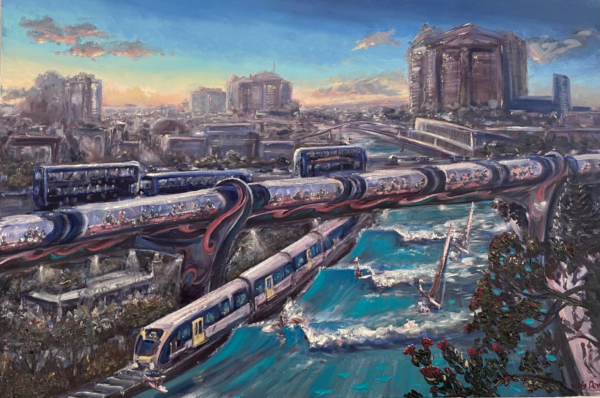
The idea is to put cycle lanes in the sky along the main arterial routes of Auckland. These will be safe from other traffic, without hindrance from hills and weather protected. With beautiful design and additional viewing platforms, this idea would transform the lives and health of Aucklanders. Free to use, it would alleviate poverty and isolation due to lack of funds to pay for trains or buses. It would aid and support good physical health and be an extraordinary tourist attraction for visitors from around the world. We have a beautiful city and this would be an incredible way for people to see it with minimal disruption to the everyday life of those that live here.”
Some of the paintings overlap with reality: a native nursery on the slopes of Maungawhau actually exists, as part of the Tupuna Maunga Authority’s work to recloak the volcanic tihi in greenery. A vision of aerial night-cafes in Western Springs feels like something Motat or the Zoo might be dreaming up as we speak. A waka navigating a waterway through Myers Park: a dream, or a sign?
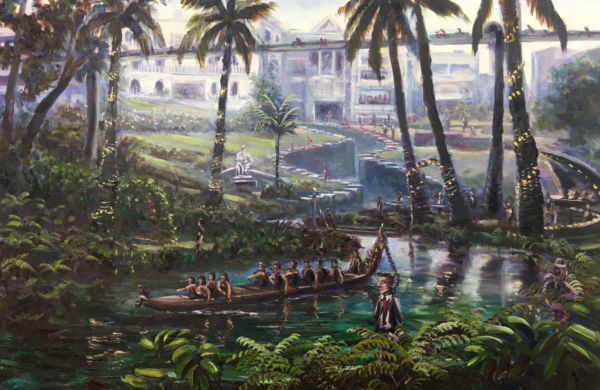
One painting in particular has ignited great curiosity: a heroic image of a revitalised Wai Horotiu flowing down Queen Street (an appealing notion that bubbles up as constantly as the spring itself). It was shared by Councillor Chris Darby as a metaphor for light rail, and lauded by Simon Wilson in the Herald as an example of bold visions besting timid ideas: “an Auckland that might never be but is utterly worth imagining.”
Recreating the Waihorotiu stream that once flowed down the Queen St valley, has been on my mind for a few years. Artist Chris Dews has got me thinking of how we could imagine light rail gliding down Queen in a blue and green environment. pic.twitter.com/nAglweuFxQ
— Chris DARBY (@DarbyatCouncil) July 4, 2021
Visions help lead us towards futures – so it’s useful to inquire what visions dance through the heads of our leaders. Did a Peter Siddell painting of charming Mt Eden villas hanging in the main Council chamber shape the recent discussion on housing zones, for example?
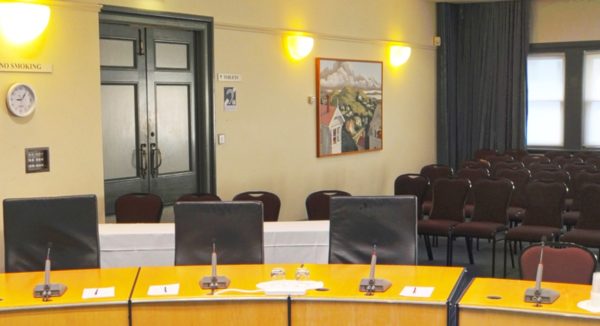
Fittingly, Chris Dews will be presenting his work in this same chamber – at an upcoming meeting of council’s Planning Committee on Thursday 5 August, 10am, at the Auckland Town Hall. (These meetings are livestreamed and general business is open to the public).
Chris is open to suggestions for other visions to bring to life. Check out his Instagram, drop him an email, or come to a live painting and open conversation at 22 Emily Place, Thursday 22 July, 5.30-7.30pm, to openly discuss how we can see a brighter future for Auckland.
And here’s the artist’s statement from the exhibition, in the form of an open letter to the mayor…
An Open Letter and Invitation from Chris Dews to Mayor Phil Goff
Dear Mayor Goff – kindness is coming your way!
“To be truly radical is to make hope possible rather than despair convincing.” — Pamela Haines
In your 2018 “Vision for Auckland” Statement you said – “In the longer term, Auckland needs to be a city that encourages the best and brightest New Zealanders to stay in this country and attract the skilled people, entrepreneurs and investments our city and country needs.”
Thanks to COVID 19, that vision has been accelerated and all our best and brightest Kiwis are now home, but it may not be for long. Despite Auckland being voted the most livable city in the world recently, this is really only true if you are already wealthy. Then it is of course absolutely amazing. For most of us, the cost of housing, transport and food is more than we can actually afford and our week to week existence is difficult to say the least.
My exhibition is all about the kind of city that would inspire both the best and the brightest of kiwis to want to stay, but to also be a city that is healing our issues of homelessnes, transport poverty (which is why there is such a congregation of homelessness in the CBD) and enough healthy food in people’s bodies to truly nourish them.
Recently I caught up with a few of my homeless friends from Morningside/Kingsland and I was completely astonished to hear what they had to say… “Kindness is coming back Chris! We can feel it in the streets!”
We all know that change must start from the ground up, and kindness is coming your way too, Phil Goff. You have a very difficult job. I am one of many people in Auckland who would like to constructively help create a beautiful and inspiring city. Together we can truly heal our people, creating well-being at every level of social strata.
Are you aware of the vTaiwan online platforms that the Taiwanese government is using to shape social policy? We need to do this here too. It would be the quickest and easiest way for the voice and intelligence of the people of Auckland to be heard. And we need to hear the voice of Ngā Mana Whenua loud and clear. Their understanding of the world as an integrated system of relationships is exactly what we need to bring health to our city, avert climate change and heal the unjust division of resources between the rich and the poor. I’m not saying that everyone has to have the same rewards in life, but everyone deserves food, shelter, safety and the opportunity to heal from the damage that is created by poverty.
The work being done on our streets putting in cycle lanes and bus lanes simply doesn’t go far enough. We need to completely change the psychology of our city so that cycling and other active modes of transport are what is naturally preferred. This also supports the health of our people and is the cheapest form of travel. Thus my paintings of cycleways in the sky – weather protected, safe from traffic, no hills. Someone living in West Auckland could commute to university in 20 minutes for free on one of these cycle lanes.
Or the pedestrianised greening of our streets through establishing urban farms, where our currently homeless neighbours could find community, learn to care for themselves and finally be provided with truly healthy nutrition on a daily basis.
Let’s bring back our Queen St River – Waihorotiu. Let’s bring her back to the light through Myers Park and Aotea Square and then bring her all the way down the middle of Queen St. There is already so much concrete. Queen St would become a famous attraction if pedestrianising meant that each side of the street was a beautiful boulevard with outdoor dining overlooking a beautiful stream canal. The pedestrian crossings could be criss-crossed over bridges and the buses could have bridges perpendicular to the flow of the stream.
It could be done, it would make Queen St one of the most beautiful in the world.
Please come to my exhibition, I and my friends would like to have further conversation with you on these matters.
Kind regards,
Chris Dewsy
“When we awaken to the enormity of our crisis and the magnitude of our loss, often the first response is crushing despair. Yet on the other side of despair is fullness and an urgency to live life beautifully. We can choose a different world – the more beautiful world our hearts tell us is possible.” – Charles Eisenstein
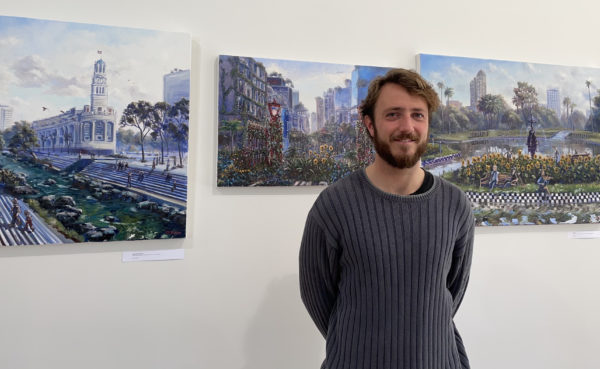



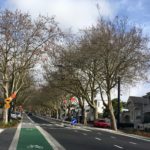

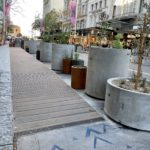

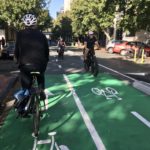

 Processing...
Processing...
Ugh this isn’t how changing places is meant to work – you’re meant to set piss-weak goals and then walk back from them to the point where nothing happens for years, and the city looks the same as it did a decade ago.
Then you scratch your head and wonder why all the young people see no future in NZ or its ability to solve even the most basic of problems and so they leave.
Only then can you truly achieve Kiwi urban planning nirvana.
Ugh why do I post before I’ve had coffee.
Lol
I love this so much. Visionary thinking like this is so incredibly valuable.
I love the concept but looking at this from an engineering perspective I can see a challenge beyond the obvious one of persuading the council to actually do something progressive: I don’t think there’s actually that much water in Waihorotiu. The pipeline it currently runs in under Queen St is only 1050mm to 1140mm diameter, much of which is likely spare capacity for storm events (otherwise the street itself would regularly flood). So it’s probably better visualised as a small stream than a small river. Supplementing it with water from other catchments is, in principle, incompatible with tikanga but this would have to be consulted on.
A bit like the render of Light Rail at Mangere Town Centre without explaining the compromises required… 🙂 Probably the point of these paintings is getting ideas to the point where someone will investigate them more. And inspiring people to be excited about their city and the options we have.
Yes true
At some point before it was covered over, Waihorotiu was channelized and became known as the Ligar Canal. If you search online for photos of this “canal” (more of a drain) you can see how much water once flowed in it: certainly less than Mr Dews depicts in his artwork, but not a trivial amount either. That said, much of the flow has probably since been directed elsewhere by other developments in the city.
It is said that the stream was originally fed by a spring but from what I can tell this is, sadly, a myth.
It always makes me laugh when you watch an American sitcom and the intro has images of their city. Almost always there is an image of a excessive motorway dividing the city at night with lots of congested traffic, like it is some kind of feature they are proud of.
Cities illuminated by tail lights.
It’s a great idea, I love many of the concepts. Here’s the problem: The vision needs to be with Waka Kotahi, AC and AT. When they put a project out for tender they are heavily constrained by maintenance costs – anything other than concrete is hard to get across the line. I proposed a vertical garden for urban motorway pillars – it wasn’t given the ‘green’ light, as the maintenance wasn’t built into the original tender. To do this retrospectively with the irrigation etc would be much more expensive, so it’s likely never to happen. The vision needs to come from the very top – when budgets for projects are set. Such a shame… maybe one day, what they’ve done in Mexico City is amazing – I’ll be going there again once we can travel again.
I used to think Queen Street should be a canal with a lock to get up to the town hall but that’s sort of about 2 or 3 centuries too late. So go with the stream. The elevated bike lanes in plastic tubes would be the way to go. Get there first because if every other city in the world gets in before us it will be like the light rail it will never happen. If you remember back to the 1990’s Rotorua was the first town to start painting the curbing and paving the footpaths Auckland is even now struggling because it’s not cool anymore. Surprise us it makes change easier.
Royce , if they turn Queen St into a canal you would a set of ear muffs stronger than what they use at the Airport to damped the noise from the Shopkeepers complaining .
They can’t be the future because they all look better than what we have now. The future is all about ugly concrete tubs everywhere and random panted shapes in hideous colours.
Love the idea. Would be fantastic to see more greenery around Auckland to soften the concrete look. The trees will help to keep the streets cool in summer.
There are some buildings in Singapore have green plants growing on it. (pity I can’t post image on this, is there is way to show image on this blog?) It look really cool.
I’d love to see them, Ian. People post pictures on here using a number of other sites. I use imgur. Not hard to set up an account. Does that work for you?
Hi Heidi, I have put in my twitter and the link is https://twitter.com/ianray68/status/1415478838109229056/photo/1
Nice!
Those painted shapes are often dots and they are random because WK and AT have never been able to join them.
Lol.
I thought they were random to confuse drivers who would be too busy trying to figure them out to see the pedestrians trying to cross.
I first saw them at a private parking area and notice they have since disappeared – I suspect that confusion caused a few accidents. Especially the one which appeared to be a painted roundabout…
When coming up with “official” images, the task is to show what it will look like, if it does get built. Art can take the mind a lot further, setting the target far away to see how close to it you might be able to get. There is a real and urgent need to stretch imagination, to get past fear of the future to hope for the future. We need “what if?” to allow serious consideration of stretched targets for design and urban living (including healing the suburbs). This kind of art needs to be taken seriously, not because it should be a photo-realistic detailed design, but because it can portray what spaces can feel like if really good design gets done, rather than “just good enough”.
Yes, nice way of describing it.
“and looks “just like the render.””
Look closely at those renders. Often the relative sizes of things in them are altered to emphasise elements of the project deemed important to those proposing it. One tactic is to alter the relative size of objects to skew the viewer opinion. Examples are making the cars in the render larger to make the proposed big building look smaller and therefore more acceptable, Double decker buses smaller, road lanes narrower, cars bigger and cyclists smaller etc.
And miraculously lit shadows cast by every building or overpass..
Love the paintings and so do my kids. Great.
A cautionary note on elevated active modes:
https://www.youtube.com/watch?v=rDmkhhJWKU8
https://www.theguardian.com/cities/2018/oct/02/walkways-in-the-sky-the-return-of-londons-forgotten-pedways
https://www.archdaily.com/469780/why-the-skycycle-would-never-work
I think we were closer to the mark burying SH20 through Waterview, rather than sweeping cyclists and pedestrians up in the rapture.
You could view it as an echo of the vision from Futurama, at Worlds Fair 1939; the heavier the mode, the deeper it goes. (Mental image of a Morlock handing over his licence and trying to blow under 250…)
You already have shelter from all weathers on so many commercial downtowns in NZ, with those lovely deep cantilevered awnings. The need to shelter from English weather and Welsh marauders may have spurred development of something similar in Chester, UK.
https://en.wikipedia.org/wiki/Chester_Rows
Extending shelter to include windbreaks and street trees on the more exposed bike routes and footpaths might make more sense than expensive hamster tubes (I’m looking at you, Northwestern…)
https://www.roadbikerider.com/ultimate-guide-cycling-wind/
Still, the dream is lovely, however painful it makes waking.